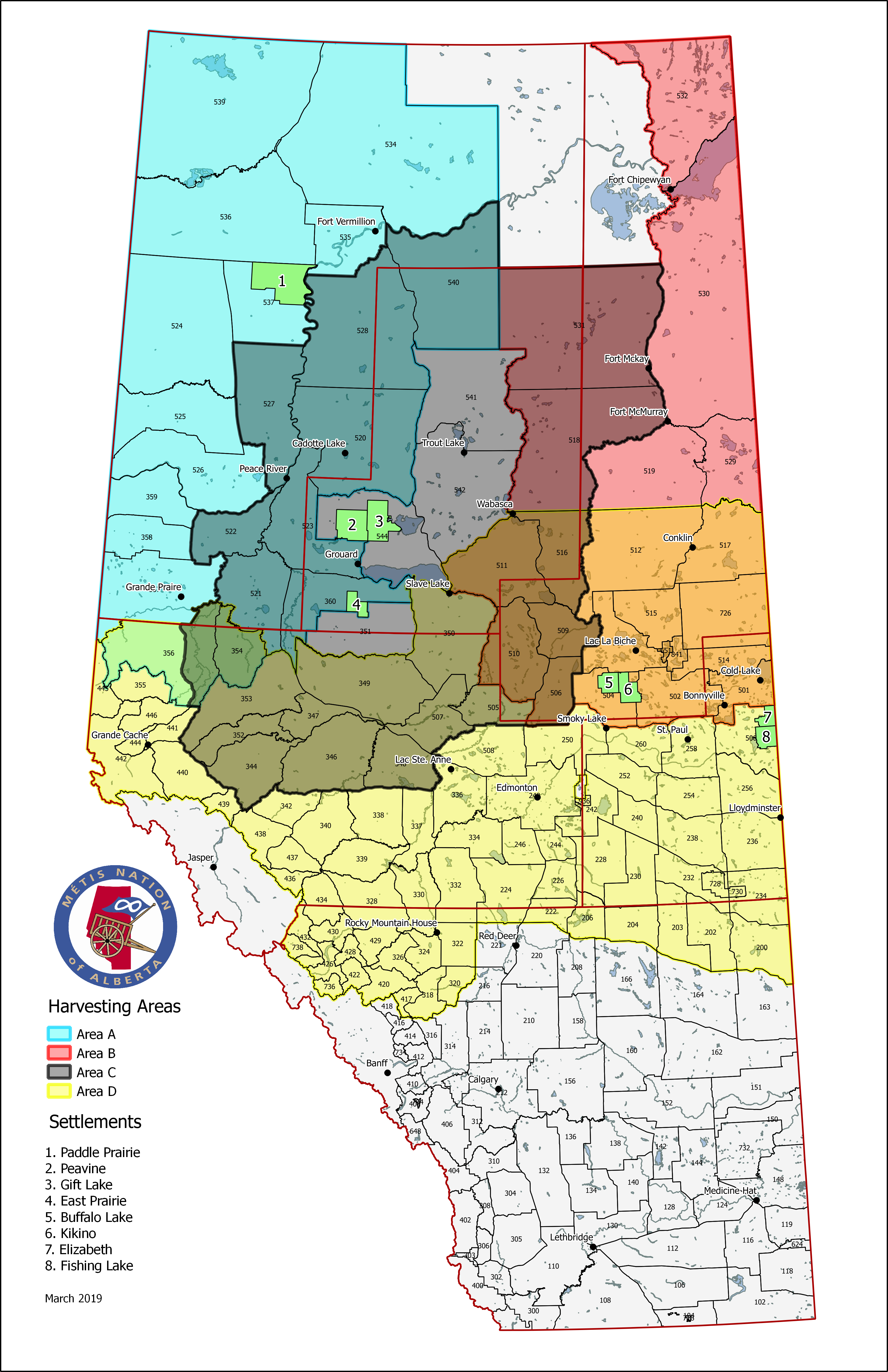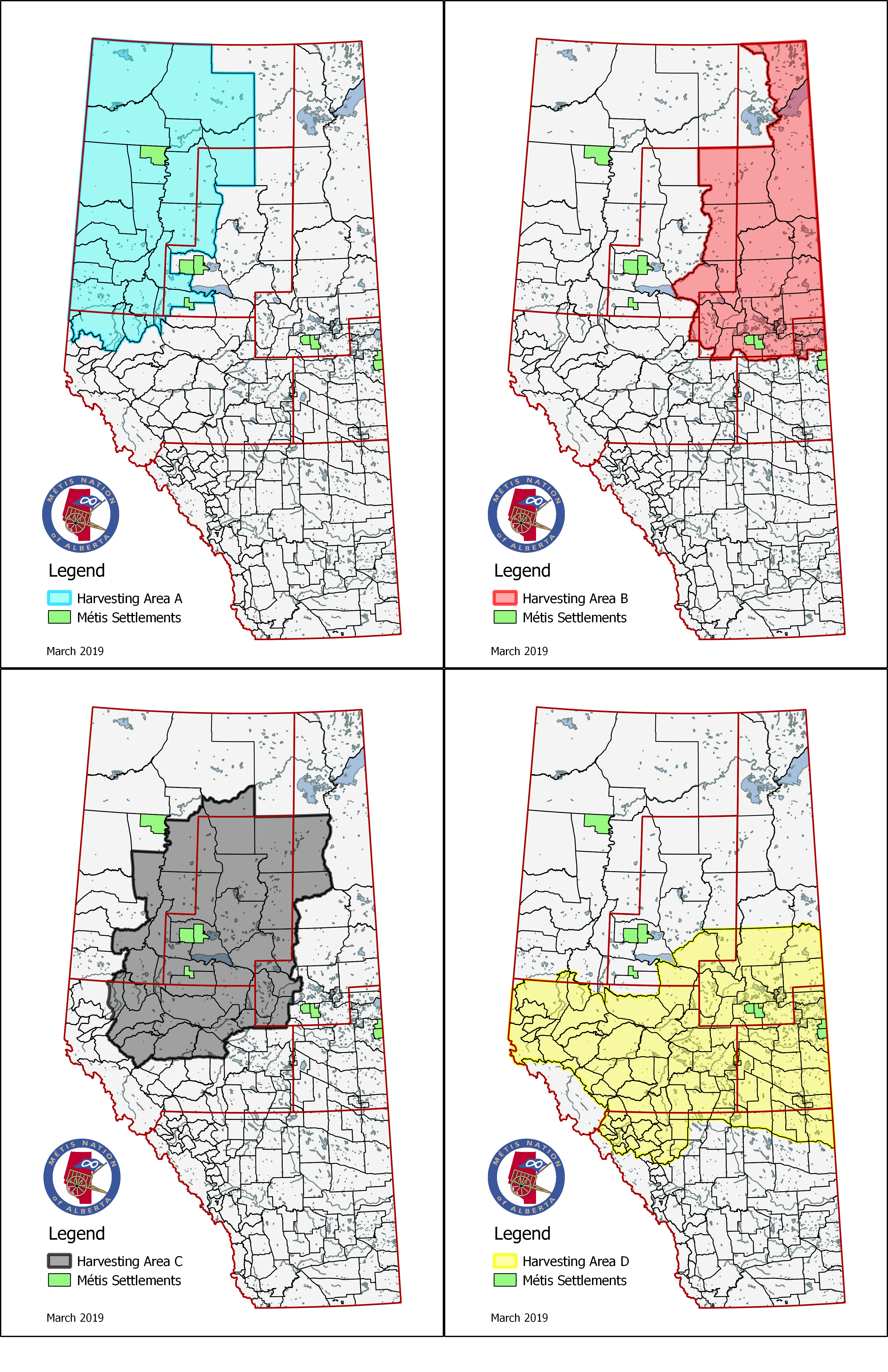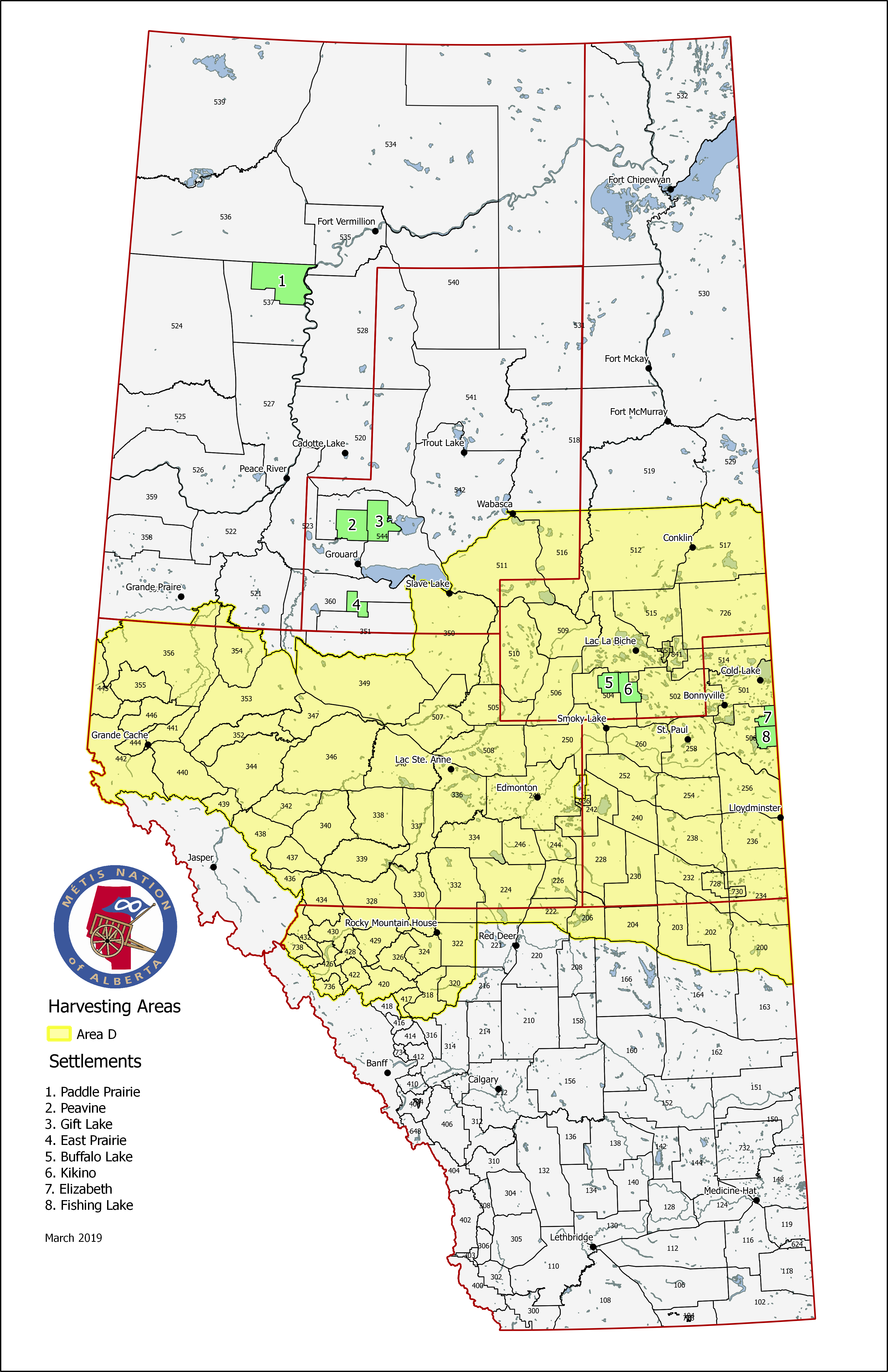It has been an ongoing struggle to have Métis harvesting rights recognized here in Alberta. The Otipemisiwak Métis Government has worked for many years to secure a sustainable harvesting agreement with the provincial government that honours our historical connection and right to this land. We will never give up on what we know to be true: the Métis Nation within Alberta have inherent harvesting rights covering every corner of our province, including the south.
Current Rights
The 2019 Métis Harvesting in Alberta Policy replaces the 2010 policy and recognizes the rights of eligible Citizens to hunt, fish, and trap for food in four large regional Métis Harvesting Areas in central and northern Alberta (as opposed to the much smaller 25 local Métis harvesting areas provided for in the 2010 policy).
HARVESTING ENGAGEMENTS “WHAT WE HEARD” REPORT
In 2018, the Métis Nation of Alberta (now the Otipemisiwak Métis Government) and the Government of Alberta (GoA) agreed to collaboratively review the GoA’s Métis Harvesting in Alberta Policy. As a part of the collaborative review process, the MNA and GoA undertook a series of engagement sessions and conducted online and paper surveys as a means to gather feedback from Métis harvesters. The feedback from the engagement sessions and the survey were compiled to feed into and inform the policy review process.
Download the What We Heard [pdf] report.
Past updates can be found on the Archived Harvesting Updates page.


Harvesting Area A

Harvesting Area B

Harvesting Area C

Harvesting Area D

Harvesting FAQs
We’ve put all the answers to commonly asked harvesting rights questions here.
All FAQsWhere am I able to harvest?
Through your application process, you will have to show historical (pre-1900s) and contemporary connection to a defined Métis Harvesting Area. Please click here to see the Métis Harvesting Area maps:
When can I start harvesting?
Approved harvesters can harvest year-round; however, there are yearly fishing closures, most of which are April 1 to May 14 annually. Stay informed by regularly checking the current Domestic Fishing Licence regulations [pdf].
As with traditional Métis harvesting practices, we encourage you to consider sustainable and responsible harvesting and fishing methods for future generations. This includes not harvesting any females (cow or doe) and young between the months of January through July.
Where do I find the Métis Harvesting in Alberta Policy?
The Government of Alberta’s policy on Métis Harvesting can be viewed online.
If you have questions not listed in the FAQs section, please contact the Harvesting team by email at harvesting@metis.org
When can I apply for my Métis Harvester Identification Card?
The effective date for this new system started on September 1, 2019. You can apply now for you harvesting card.
How long is the Métis Harvester Identification Card valid?
The Métis Harvester Identification Card is valid for the life of the Métis citizen.
I am not currently a citizen of the MNA, what does the harvesting policy mean for me?
This Métis Harvesting Agreement only applies to citizens of the Métis Nation of Alberta. If you self-identify as Métis and have historical Métis ancestry, you can apply to become an MNA citizen.
What if I already applied for a Harvester Identification Card but am waiting for my MNA citizenship card?
Until each current applicant is accepted as an MNA citizen, the MNA cannot process your application to be identified as a Métis Harvester under the Métis Harvesting Agreement. You will have to apply for your Métis Harvester Identification Sticker after receiving your MNA citizenship card.
How long is my harvesting letter from the Government of Alberta valid?
All questions regarding Alberta’s harvesting letters should be directed to the Government of Alberta.
If I have a harvesting letter from the Government of Alberta, do I pre-qualify for the Métis Harvester Identification Card?
No. You will have to apply for a Métis Harvester Identification Card with the MNA.
What if I live on a Métis Settlement, but I am not a citizen of the Métis Nation of Alberta?
This implementation process relates only to the citizens of the Métis Nation of Alberta. You will need to contact the Métis Settlement General Council to find out about their process or contact the Government of Alberta.
Is there a limit to the amount of harvesting areas I can have a connection to?
No. However, you need to show both historical and contemporary connection to each harvesting area. Through the MNA Harvester Identification Card application process, one must show pre-1900 family roots as well as a contemporary connection in the respective harvesting area(s). Potentially, an MNA citizen can connect to two, three, or all harvesting areas, if they can prove the area connection requirements.
Can family members (e.g. partner) who are not Métis harvest under my harvesting rights?
No, the Métis Harvesting Agreement and Policy solely applies to approved harvesters who are citizens of the Métis Nation of Alberta.
Where do I get my Métis Harvester Identification Card?
Similar to the MNA citizenship application process, the Métis Harvester Identification Card application process will be based out of the provincial office in Edmonton. Our Registry and Harvesting teams will also travel the province to help with applications and provide information.
If you are about to apply for MNA Citizenship, you will be able to apply for the Métis Harvester Identification Card simultaneously.
How do I show historical and contemporary connection to a harvesting area?
To show the connection to a harvesting area, through the MNA harvester application process, one must show a pre-1900 ancestral connection to the Métis Harvesting Area(s) in the Métis Harvesting in Alberta Policy (2018). Potentially, an MNA citizen can connect to two, three, or all harvesting areas.
How to show historical and contemporary connections to harvesting areas:
- Pre-1900 ancestral connection must be shown by genealogical history, including where ancestors lived and when they lived there. The MNA is currently enhancing our database and registration process to assist MNA Citizens with establishing their ancestral connection to the Métis Harvesting Areas.
- Contemporary connection to the same Métis Harvesting Area must be shown through compliance with the MNA’s policy on contemporary community acceptance.
Southern Alberta is not included in the updated policy, why not? What is the plan?
A previous court decision has found that Métis do not have harvesting rights in the Cypress Hills area. Alberta feels bound by these decisions and unable to recognize Métis harvesting rights in the Treaty 7 area at this time. The MNA strongly disagrees and continues to fight for the recognition of Métis harvesting rights in the south.
The Métis Harvesting Agreement includes several wins for MNA Region 3:
- For the first time, Alberta recognizes Métis harvesting rights in the north of Region 3, particularly around Rocky Mountain House;
- MNA members living in Region 3 will be able to harvest in central and northern Alberta if they can show a historical and contemporary connect there; and
- Alberta has committed to further discussions regarding the recognition of Métis harvesting rights in the south. Until now, Alberta had refused to discuss Métis harvesting in southern Alberta. With this agreement, that has changed.
